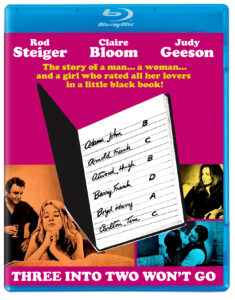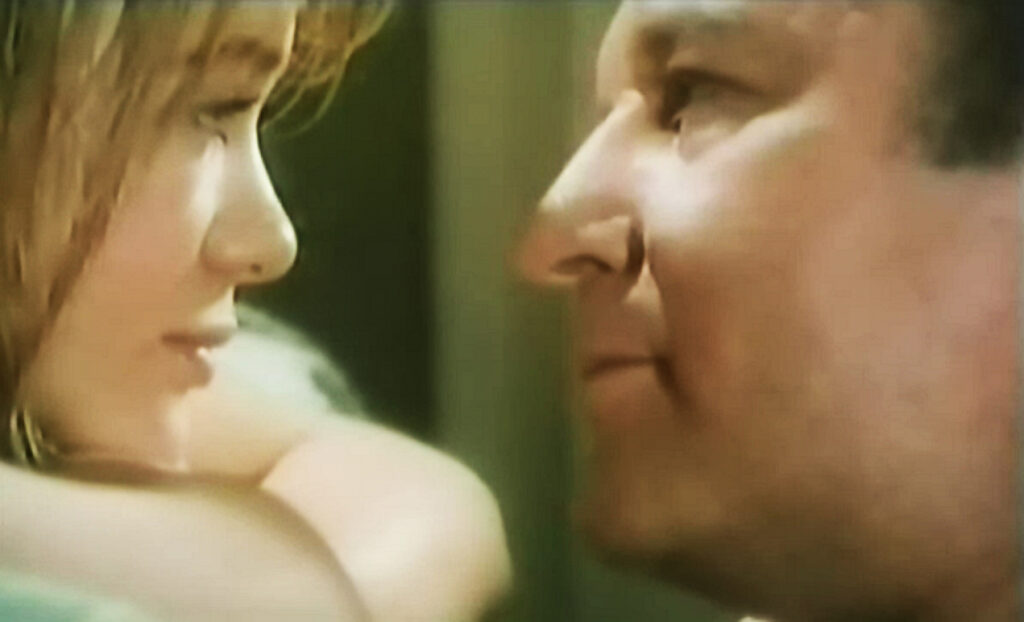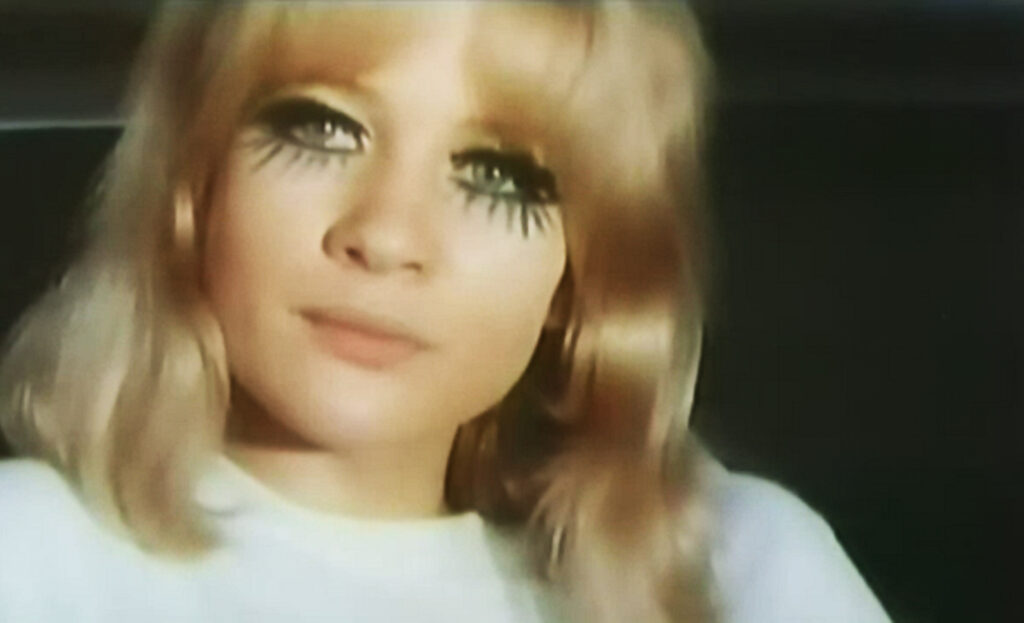Rod Steiger and Claire Bloom face Martial Strife when Variable Judy Geeson Comes A-calling
DIRECTED BY PETER HALL/1969
BLU-RAY STREET DATE: AUGUST 22, 2023/KL STUDIO CLASSICS

Oftentimes certain movies are criticized for feeling “stagey”- too much of select characters talking in a limited number of locations. In the case of 1969’s Three Into Two Won’t Go, it feels like a movie that’s successfully defied becoming stagey. The potential for staginess is entirely there, what with only a handful of speaking parts in but a few relatively intimate locales- an house, a hotel room, an office, a car. Add the fact that the film’s director, Peter Hall, not only comes from theatre, but is widely considered the most important individual in British theatre since at least the 1950s, and it’s no wonder “staginess” is in the mix, even as a trap avoided. (A point of order about the director- that’s “Sir Peter Hall” to you and I!)
The titular math is reflective of the love triangle that Rod Steiger’s character Steve- a rather frumpy home appliance sales agent from Middlesex, England- has gotten himself into, something that can’t work out cleanly. The film itself, however, proves to be a satisfying, sensitive equation. Settling into it brought on the refreshing sensation of something quite rare these days: a competent, honest, unassuming, grown-up drama. Though the performances are stellar all around (Steiger; Claire Bloom as his wife; Judy Gleeson as his mistress), there’s no “awards baiting” going on here. Three Into Two Won’t Go is simply indicative of a time when movies like this were part of an ordinary filmgoing landscape.
Three Into Two Won’t Go, a film all about marital discord (a subclass of dramas that were having a moment at the time), materialized the same year in which the marriage of its stars Steiger and Claire Bloom ended in divorce. While Bloom and Steiger’s real-life personal tumult may or may not have informed their characters’ strained nuptials, the naturalistic heft of their performances here is undeniable. Judy Geeson plays Ella, a young outwardly perky tart with some deep-seated damage fueling her perpetual need to escape. Turning men on turns her on, which propels her into recklessness. This proves to be a recipe for disaster after Steve, during one of his business trips, not only takes up with her but becomes fixated on her. The first time, he leaves her some money. The second time, he places some money on the bedside table as she sleeps. He then caresses her hair, hesitates, and then decides not to leave the money after all. This relationship, at least in his mind, is something else.

When the live-in housekeeping job Steve arranges for her at his friend’s inn doesn’t last, Ella turns up at Steve’s provincial doorstep. He’s not home, but his beleaguered wife, Frances (Bloom) is. They strike up an unlikely friendship that leads to Ella sticking around. Upon his return, this proves understandably jarring for Steve. Things compound from there. And try as they might, three into two really won’t go.
A particularly rare film until now, Three Into Two Won’t Go is released to disc, with bountiful bonus features, by KL Studio Classics. Of particular note is the television cut of the movie, presented in standard definition and cropped to a 4:3 aspect ratio. Presumably in an effort to fill the copious gaps left by the film’s excised R-rated intimate scenes, around twenty minutes of new material was shot and shoehorned in. This amounts to a particularly egregious bit of addition and subtraction, involving the creation of a whole other storyline with new actors playing new characters.
In the sordid history of films being “sanitized” by outside meddlers, this “television cut” of Three Into Two Won’t Go may be one of the most embarrassing. The new footage focuses on explaining away Ella’s delinquency with some sort of probation officer on her trail. In the surprising amount of these sore-thumb boringly rendered “TV style” scenes we meet her terror of a father, her timid mother, her rock drummer boyfriend, et al. This rambling malarkey repeatedly implies that Ella is the problem in the film proper, with zero fault assigned to the Steve, the serial-cheating husband.
While all initial mentions of such “unpleasantries” as menstruation and abortion are scrubbed, the fact that they do pop up much later suggests that the censors eventually just gave up. Yet, they still wound up with a longer movie- 100 minutes vs. the theatrical’s ninty-three-minute run time- and one that is a true testament to the destructive power of such editing. Hall’s theatrical cut is thoroughly engrossing; the sexist TV cut plays like it’s stuck in the mud. It’s absolutely no wonder that Hall, screenwriter Edna O’Brien, and source novelist Andrea Newman demanded their names be removed. It simply adds up to the fact that Three Into Two Won’t Go shouldn’t have ever gone to restrictive broadcast television.

Kino Lorber’s presentation of the theatrical cut looks quite acceptable; a transfer that doesn’t shy away from movies’ general look and graininess of its era. The film’s motif of the color white- primarily represented in the painting being done inside the house and in Ella’s wardrobe- doesn’t force itself to the forefront, but instead is kept surprisingly subtle for the number of times it’s mentioned.
Besides the film’s theatrical trailer (newly mastered in 2K), KLSC delivers a new audio commentary by film historians Troy Howarth and Nathaniel Thompson. They dig right into the filmographies and other points of interest surrounding the actors as well as, to a lesser extent, the filmmakers. There are a ton of researched and recalled details here, not to mention the kind of fascinating detours we’ve come to expect from Howarth and Thompson (and Howard S. Berger, whose presence is missed this time). Pay attention, as they take us on a twisty and turny road- but one full of additional discoveries.
With this strikingly unassuming film, a titan of the British theatre proves that with the right actors and the right crew, Three Into Two Won’t Go can indeed go far. For fans of bold performances in strong dramas, it is not to be missed.
The images used in this review absolutely do not reflect the image quality of Kino Lorber’s Blu-ray release, and are intended only as representation of the film itself. Thanks to Kino Lorber for providing this Blu-ray review copy.

